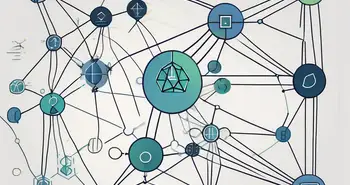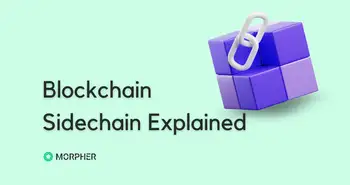Pow vs PoS: A Comparison of Two Popular Blockchain Consensus Mechanisms

As a blockchain expert with a deep understanding of consensus mechanisms, I am excited to bring you an in-depth comparison of two of the most popular ones: Proof of Work (PoW) and Proof of Stake (PoS). In this article, we will explore the fundamental concepts behind these consensus mechanisms, dissect their advantages and disadvantages, and analyze their efficiency, security, scalability, and performance. Let's dive in!
Understanding Blockchain Consensus Mechanisms
In the world of blockchain, consensus mechanisms play a crucial role in ensuring the validity and security of transactions. In simple terms, a consensus mechanism is a set of rules that determines how nodes in a distributed network agree on the state of the blockchain.
The Role of Consensus Mechanisms in Blockchain
Consensus mechanisms address the key challenge of achieving agreement in a decentralized network where participants may be untrusted or malicious. By utilizing a consensus mechanism, blockchain networks can achieve decentralized consensus and prevent the double-spending problem.
Key Characteristics of Consensus Mechanisms
Consensus mechanisms vary in their approach and characteristics. Some key factors to consider when evaluating consensus mechanisms include security, efficiency, scalability, decentralization, and energy consumption.
An In-depth Look at Proof of Work (PoW)
Proof of Work is the consensus mechanism utilized by the renowned Bitcoin blockchain. It operates on the principle of miners competing to solve complex mathematical puzzles in order to validate transactions and add them to the blockchain.
The Concept Behind PoW
In a PoW system, miners invest computational power in solving cryptographic puzzles. The miner who successfully solves the puzzle first gets to add the next block to the blockchain and is rewarded with cryptocurrency. This process is resource-intensive and requires a significant amount of energy.
Pros and Cons of PoW
One of the main advantages of PoW is its robust security. The computational power required to attack the network is prohibitively high, making the blockchain resistant to attacks. However, PoW's energy consumption is a concern, as it requires vast amounts of electricity. Additionally, PoW can suffer from scalability issues as the size of the network and transaction volumes increase.
Unpacking Proof of Stake (PoS)
Proof of Stake is an alternative consensus mechanism that aims to address some of the limitations of PoW. In a PoS system, validators are selected to create blocks and validate transactions based on the amount of cryptocurrency they hold and “stake” in the network.
The Principle of PoS
In PoS, validators are chosen to validate blocks based on their stake in the network. This means that the more cryptocurrency a validator holds, the higher the chances of being selected to validate transactions. PoS eliminates the need for resource-intensive computational puzzles.
Advantages and Disadvantages of PoS
One of the key advantages of PoS is its energy efficiency. Since validators do not need to solve complex puzzles, the energy consumption is significantly lower compared to PoW. However, PoS may raise concerns regarding centralization, as validators with more cryptocurrency have a greater influence over the network.
PoW and PoS: A Comparative Analysis
Now, let's compare PoW and PoS across various dimensions to understand their relative strengths and weaknesses.
Efficiency and Energy Consumption
While PoW has high energy consumption due to the computational puzzles, PoS is more energy-efficient, making it a greener alternative. PoS offers a faster transaction confirmation time, making it more efficient for everyday use.
Security Aspects
Both PoW and PoS provide robust security mechanisms, although PoW has a longer track record and has proven itself to withstand attacks. PoS introduces new challenges related to the concentration of wealth and possible collusion among validators.
Scalability and Performance
PoW suffers from scalability limitations as the network grows and transaction volumes increase. PoS, on the other hand, has the potential for better scalability, as it eliminates the need for resource-intensive computations.
The Future of Blockchain Consensus Mechanisms
The world of blockchain is constantly evolving, and new consensus mechanisms are emerging to address the limitations of existing approaches.
Emerging Trends in Consensus Mechanisms
Some of the emerging trends in consensus mechanisms include Delegated Proof of Stake (DPoS), Practical Byzantine Fault Tolerance (PBFT), and Directed Acyclic Graph (DAG). These innovative approaches aim to optimize scalability, energy consumption, and security.
The Potential Impact of Quantum Computing on PoW and PoS
Quantum computing poses a potential threat to PoW as its computational power could undermine the security of cryptographic puzzles. However, PoS may offer more resilience against quantum attacks since it relies on validators' ownership of cryptocurrency rather than computational power.
As an expert in the field, I have witnessed the rapid evolution of blockchain consensus mechanisms firsthand. In my experience, selecting the most suitable consensus mechanism depends on the specific requirements of the blockchain network. Each mechanism comes with its own trade-offs, and understanding these trade-offs is essential for making informed decisions.
Remember, when considering different consensus mechanisms, it is vital to evaluate their efficiency, security, scalability, and performance to ensure that they align with the goals of your blockchain project.
FAQ
What are consensus mechanisms in blockchain?
Consensus mechanisms are rules that enable distributed networks to agree on the state of a blockchain. They ensure that transactions are valid and prevent the double-spending problem.
What is the difference between PoW and PoS?
PoW relies on computational power to validate transactions, while PoS selects validators based on the amount of cryptocurrency they hold. PoW is known for its robust security, while PoS offers energy efficiency and faster transaction confirmation times.
Which consensus mechanism is more energy-efficient?
Proof of Stake (PoS) is more energy-efficient compared to Proof of Work (PoW) as it does not require resource-intensive computations. PoS offers a greener alternative for blockchain networks.
Are there any potential future consensus mechanisms?
Yes, there are several emerging consensus mechanisms such as Delegated Proof of Stake (DPoS), Practical Byzantine Fault Tolerance (PBFT), and Directed Acyclic Graph (DAG), which aim to improve scalability, energy consumption, and security.
How will quantum computing impact PoW and PoS?
Quantum computing could potentially undermine the security of PoW by breaking cryptographic puzzles. However, PoS may offer better resilience against quantum attacks due to its reliance on cryptocurrency ownership.
As we continue to explore the fascinating world of blockchain consensus mechanisms, it is crucial to stay updated on new developments and emerging trends. By harnessing the power of consensus mechanisms, we can unlock the full potential of blockchain technology and shape the future of decentralized systems.
As you navigate the evolving landscape of blockchain technology and its consensus mechanisms, consider the opportunities that Morpher.com offers. This revolutionary trading platform harnesses the power of blockchain to provide a seamless, innovative trading experience across a multitude of asset classes. With zero fees, infinite liquidity, and the ability to engage in fractional investing and short selling, Morpher empowers you to trade on your terms. Experience the safety and control of a non-custodial wallet, the potential of 10x leverage, and the uniqueness of trading Virtual Futures. Ready to transform your trading experience? Sign Up and Get Your Free Sign Up Bonus at Morpher.com today and join the future of investing.

Disclaimer: All investments involve risk, and the past performance of a security, industry, sector, market, financial product, trading strategy, or individual’s trading does not guarantee future results or returns. Investors are fully responsible for any investment decisions they make. Such decisions should be based solely on an evaluation of their financial circumstances, investment objectives, risk tolerance, and liquidity needs. This post does not constitute investment advice.

Painless trading for everyone
Hundreds of markets all in one place - Apple, Bitcoin, Gold, Watches, NFTs, Sneakers and so much more.

Painless trading for everyone
Hundreds of markets all in one place - Apple, Bitcoin, Gold, Watches, NFTs, Sneakers and so much more.









